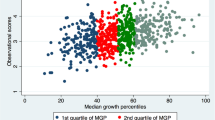Abstract
Despite well-founded predictions that the 1970's and 80's would be characterized by excess capacity in graduate education, new graduate programs have continued to appear and existing programs have expanded capacity. This paper proposes a utility maximization theory to explain the continuation of the growth process and describes the nature of the public policy which will be necessary to effect changes in resource allocation in higher education.
The basic hypothesis of the theory presented in this paper is that utility maximization of decision makers in higher education is functionally related to minimization of the gap between desired and prevailing institutional status. In an operational sense, status depends on an institution's factor complement, i.e., the institution's instructional and research programs and the quality of faculty and other inputs used to operate these programs. This implies that factor complements provide utility to decision makers in addition to their actual contribution to the educational process. Recognition of this factor and the oligopolistically interdependent nature of the decision making process in higher education is essential for the formulation of effective public policy to induce necessary reallocation of resources to graduate programs.
Similar content being viewed by others
References
Barnard, C. I. (1968)The Function of the Excutive. Cambridge, Mass.: Harvard University Press.
Carnegie Commission on Higher Education, (1971).Less Time, More Options: Education Beyond the High School. New York: McGraw-Hill.
Cartter, Allan (1970). “Scientific Manpower Trends for 1970–1985, and Their Implications for Higher Education”. Paper Presented to A.A.A.S. Meeting, Chicago, Illinois.
Culyer, A. J. (1970). “A Utility Maximizing View of Universities,”Scottish Journal of Political Economy, 17.3:349–368.
Kamerschen, David R. (1968). “The Influence of Ownership and Control on Profit Rates.”American Economic Review 58.3-1:432–447.
Lee, Maw Lin (1971). “A Conspicuous Production Theory of Hospital Behavior.”Southern Economic Journal 38.1:48–58.
Roose, Kenneth D. and Charles J. Anderson (1970).A Rating of Graduate Programs. Washington, D.C.
Ross, Arthur M. (1948).Trade Union Wage Policy. Berkeley, California.
Simon, H. A. (1965).Administrative Behavior. New York: Macmillan.
Thompson, V. A. (1961).Modern Organizations. New York: Knopf.
Author information
Authors and Affiliations
Rights and permissions
About this article
Cite this article
Lee, M.L., Stevens, D.W. & Wallace, R.L. A conspicuous production theory of resource allocation in higher education. High Educ 4, 77–86 (1975). https://doi.org/10.1007/BF01569104
Issue Date:
DOI: https://doi.org/10.1007/BF01569104




